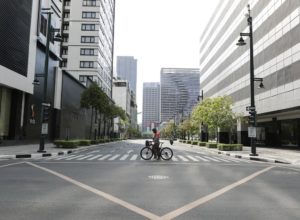As economic recession looms in the Philippines for the first time in 22 years, economists called for a more aggressive pump-priming program by the government to mitigate the economic devastation caused by a two-month lockdown on Metro Manila and other key regions.
With the 0.2-percent year-on-year first quarter economic contraction giving a bleaker preview of what’s in store for the rest of this year, ING Philippines downgraded its economic outlook on the Philippines. It is now expecting a contraction of 2.9 percent for the full year, compared to its earlier expectation of a 2.2-percent decline.
Japanese investment house Nomura also slashed its 2020 Philippine gross domestic product (GDP) forecast to a 4.8 percent recession, worse than its earlier expectation of a 2.4 percent contraction.
ING Philippines economist Nicholas Mapa said the current lockdown would undoubtedly drag GDP deep into contraction for this consumption-driven economy.
“Given the current hole left by COVID-19 in the economy, we are expecting government to double up efforts to plug the gaps by way of increased spending as the private sector appears to have lost all the punch from its consumption arm,” Mapa said.
ING is expecting at least another 25-basis point rate cut by the Bangko Sentral ng Pilipinas (BSP), as early as next Thursday alongside a possible upsizing of the government’s social amelioration package and income replacement programs, coupled with an aggressive spending plan on construction, once the lockdown is lifted.
In a separate research note, HSBC economist Noelan Arbis said fiscal policy in the Philippines had been slow to respond, with a fiscal stimulus worth 3.3 percent of GDP remaining in Congress for deliberation.
“We believe timely passage of this bill is much needed, as the impact of the lockdown intensifies and is likely to lead to much slower growth in second quarter. Slow passage of the stimulus could lead to continued economic contraction for the remainder of the year and limit the economy’s ability to bounce back once the pandemic passes,” Arbis said.
HSBC is expecting an additional 25-basis point policy rate cut in the third quarter, bringing the BSP’s overnight borrowing rate to 2.5 percent, alongside another 200 basis points of reserve requirement cut that will bring the ratio to 10 percent year-end.
The Philippines was one of the first countries to ban direct flights from the Greater China region at the outset of the pandemic and was likewise the first Southeast Asian country to impose a widespread lockdown starting mid-March, constraining the productivity of Luzon, which accounts for over 70 percent of its economy.
“As bad as things were in first quarter, things are likely to get worse in second quarter,” HSBC’s Arbis said, noting the lockdown extension to mid-May and the expansion of its coverage to other regions.
“Thus private consumption and services are also both likely to contract in second quarter, leading to a broad-based decline in economic activity. Indeed, high frequency indicators show that people’s mobility, on average, has declined most in the Philippines compared to other Asean countries. Community access to retail shops, groceries, workplaces and transit stations have all declined by at least 50 percent in the country since the start of the year,” the economist said. INQ


